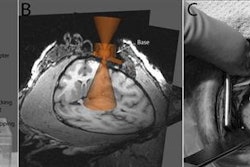While field strengths of up to 8 tesla are considered safe for humans, ultrahigh-field 7-tesla MRI has been known to cause more transient side effects, such as dizziness, than 1.5- and 3-tesla systems, according to Dr. Jens Theysohn from University Hospital Essen's Institute of Diagnostic and Interventional Radiology and Neuroradiology.
In this study, 20 healthy volunteers (mean age, 41 years) underwent a Romberg test and the Unterberger stepping test before, two minutes after, and 15 minutes after different 7-tesla MRI exposure scenarios and one 1.5-tesla MRI scenario. Each scenario lasted 30 minutes. For the Unterberger stepping test, subjects walked in place with their eyes closed to test vestibular function and balance.
The researchers discovered a temporary dysfunction of the vestibular system at 7 tesla and nothing measurable at 1.5 tesla, with older subjects more prone to the abnormality. Most significantly, the Unterberger stepping test was more sensitive in detecting vestibular disturbances than the Romberg test.
"Why the Unterberger stepping test seems to be more sensitive is unclear," Theysohn told AuntMinnie.com. "We stumbled onto it while using many different tests, trying to visualize temporary alterations. Actually, it is not scientifically evaluated to document such temporary alterations, but is rather used to analyze permanent diseases and damage to the inner ear."
(The Unterberger stepping test has also been used to assess drunk drivers, but that is another study for another time.)



















